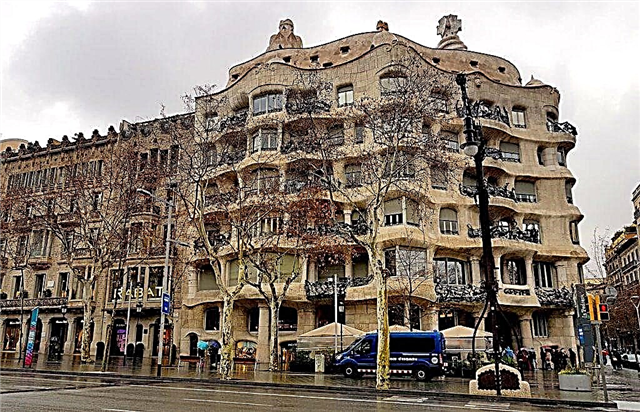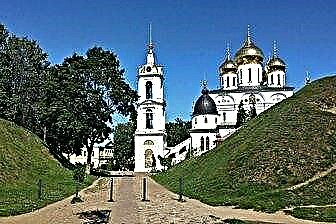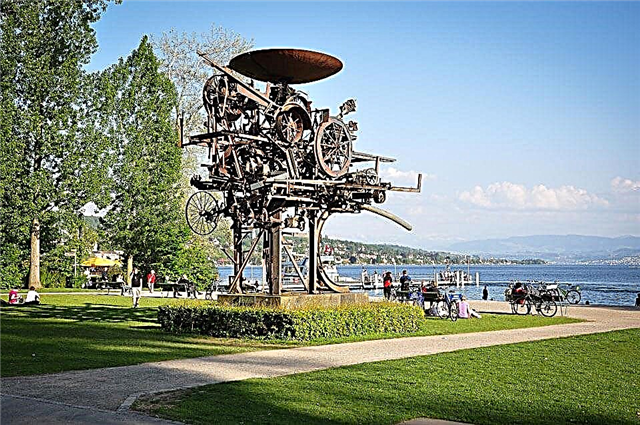Address: India, New Delhi
Start of construction: 1978 year
Completion of construction: 1986 year
Architect: Fariborz Sahba
Coordinates: 28 ° 33'11.9 "N 77 ° 15'31.5" E
Content:
History, description
A huge number of sights of India, built at different times, never ceases to be replenished with new masterpieces of architecture, once again demonstrating to the whole world the amazing culture and diversity of this South Asian country.

General view of the Lotus Temple
The Lotus Temple, recently built in the New Delhi area, is one of the brightest modern architectural landmarks not only in India, but throughout Asia as a whole. Despite the fact that its construction was completed only in 1986, the Lotus Temple has already gained extraordinary popularity among tourists from all over the world, quite successfully competing for their attention with such world-famous attractions as the Taj Mahal located in Agra or the Red Fort located completely nearby.
It is also surprising that all the artistic value of the Lotus Temple lies in a unique architectural solutionTo realize which, it took two years to create a computer model of the future temple and 6 years of construction work, in which more than 800 people took part! The temple was built in the shape of the most famous flower in the East - the lotus (which, in principle, is clear from the name). And there are no sculptures, no frescoes, no stucco molding on it either outside or inside, there are no symbolic images associated with religion. That is, nothing that we are all used to seeing in other temples. Perhaps only a huge golden sign of the Baha'is under the very dome.

Bird's eye view of Lotus Temple
However, the building is simply amazingly beautiful. In appearance, it is an incompletely blossoming lotus bud with petals arranged in three tiers, nine in each. The giant petals, which rise to a height of more than 34 meters, are made of concrete and covered with slabs of white marble on the outside. Nothing superfluous - just huge white petals closed into a dome. Perhaps this was the brilliant idea of the architect (his name is Fariborz Sahba) - to repeat what has already been invented by nature itself, and more perfect than what people simply cannot think of. Without embellishing or altering this natural perfection and grace. This flower "grows", as it should be, in the middle of the water - nine large square pools are located around it, and from each of them you can go inside the temple. The central hall of the Lotus Temple is stunning in size - 75 m in diameter and 31 m in height. It can accommodate up to 1300 people at a time.
Another interesting architectural detail: the amazing structure does not have a single straight line in its design, only smooth curves! And its natural ventilation system embodies the principles used in the construction of ancient temples. Cold air enters from below, passing through the pool system and foundation, heats up inside the building and exits through an opening in the dome. Thanks to this, the temperature inside the temple is always quite comfortable, albeit cool.

View of the main entrance of the temple
It is worth mentioning that the Lotus Temple was built by the followers of one relatively new religion (it originated in the 19th century) - the Bahá'ís, preaching the unity of all religions. That is why the entrance to the Temple is open to representatives of all religions, each of them can come here to pray (the entrance is completely free, you just have to take off your shoes to enter). The service here is carried out not by priests, but by volunteers, whose functions also include serving this temple and receiving visitors.
There are only seven temples built by Bahá'ís in the world, and each of them has nine entrances, hospitably open to all people without exception. The site for the construction of the Lotus Temple was determined by the fact that in former times the village of Baha Pur was located here ("the dwelling of Baha" in translation from Hindi). According to the existing legend, the construction of this magnificent structure, in which all the peoples of India were to unite in a single faith, was predicted 450 years ago by one of the greatest rulers of the Mughal dynasty, Akbar the Great, who saw in a dream something sublime, open to the sky, where truth, peace, love settled. and justice.

Inside the Lotus Temple
The rules for visiting the Lotus Temple, in addition to bloating at the entrance, dictate a ban on photography, video filming and even conversations inside the Temple, the acoustics of which is such that it transmits even the slightest rustle! You need to go there in groups, they are formed at the entrance. Foreigners are out of turn. On the territory of the Lotus Temple there is a small museum, the exposition of which acquaints with how the construction of this great structure took place. There are photographs, mock-ups and even the tools with which it was built. At present, it can be said without exaggeration that the Lotus Temple is the most visited place in Delhi, since its unusual architecture is indeed of great interest to people from all over the world.











